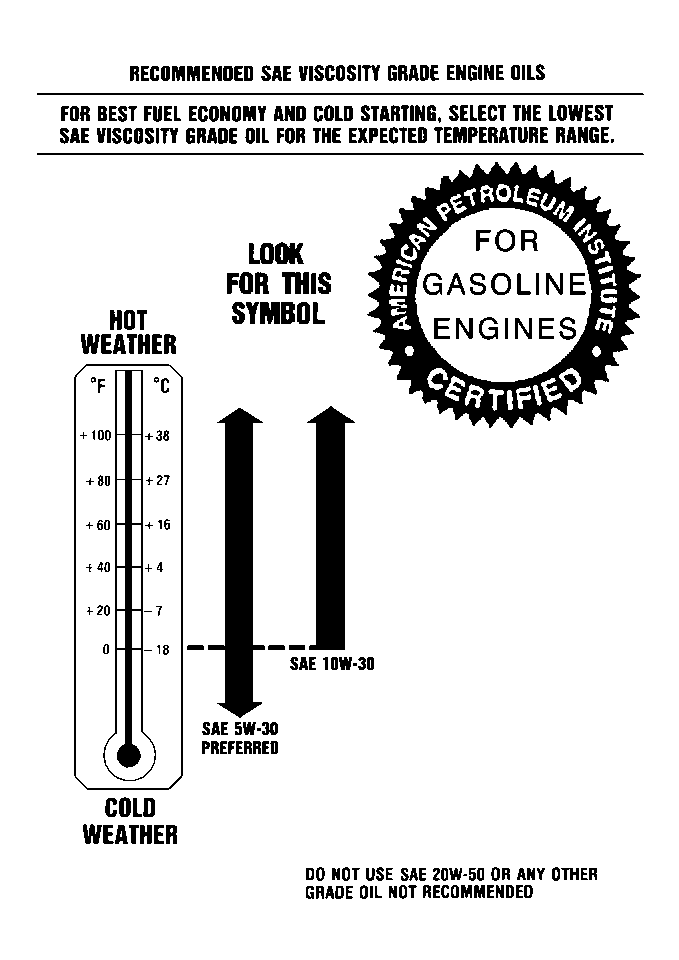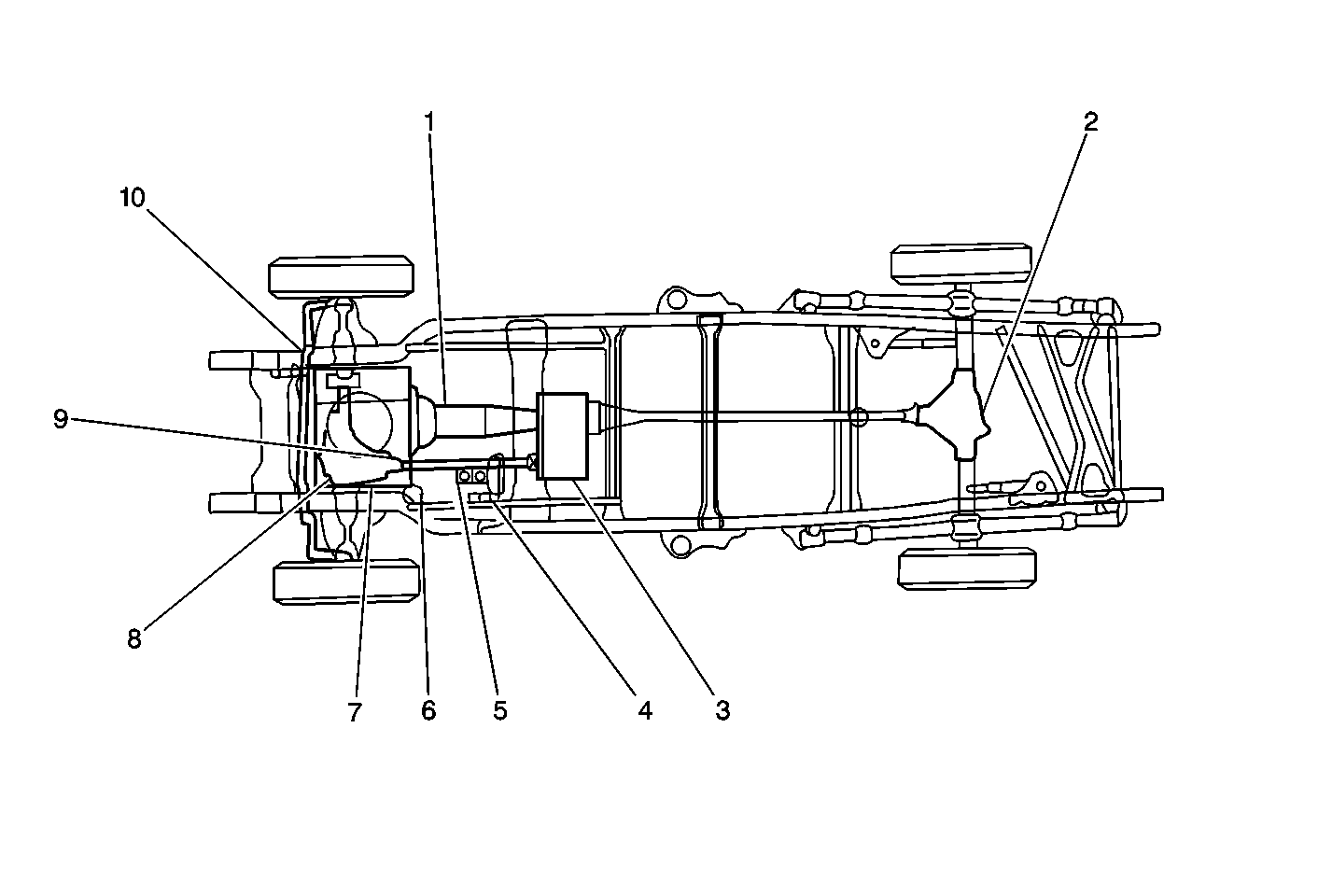For time and/or mileage intervals of scheduled maintenance items, refer to Scheduled Maintenance .
The following text and illustrations describe the details of the required scheduled maintenance services.
For information on the proper fluids and lubricants, refer to Fluid and Lubricant Recommendations .
Engine Oil and Filter Change
For information on the correct engine oil changing procedure, refer to Engine Oil and Oil Filter Replacement in Engine Mechanical-6.0L.
Gas Engine Oil Quality
Oils of the proper quality for the vehicle can be identified by looking for the STARBURST symbol. The STARBURST symbol indicates that the oil has been certified by the American Petroleum Institute (API), and is preferred for use in gasoline engines.

Engine Oil Viscosity
The recommended oil viscosity is SAE 5W-30.
Notice: Using oils of any viscosity other than those recommended could result in engine damage. When choosing an oil, consider the range of temperatures the vehicle will be operated in before the next oil change. Then, select the recommended oil viscosity.
Engine oil viscosity, or thickness, has an effect on the fuel economy and on the cold-weather operation, such as starting and oil flow. Lower viscosity engine oils can provide better fuel economy and cold-weather performance. However, higher temperature weather conditions require higher viscosity engine oils for satisfactory lubrication. When the temperature is consistently above -18°C (0°F), use SAE 10W-30. SAE 20W-50 or oils of other viscosity rating or quality designations are NOT recommended for use in any trucks at any time.
Chassis Lubrication
Notice: Do not lubricate the parking brake cables. Lubrication destroys the plastic coating on the cable.
Refer to the illustration for the location of the lubrication points for the chassis. Lubricate the following components:
| • | The transmission shift linkage |
| • | The park brake guides |
| • | The underbody contact points |
| • | The underbody linkage |
Lubrication Points (4WD)

